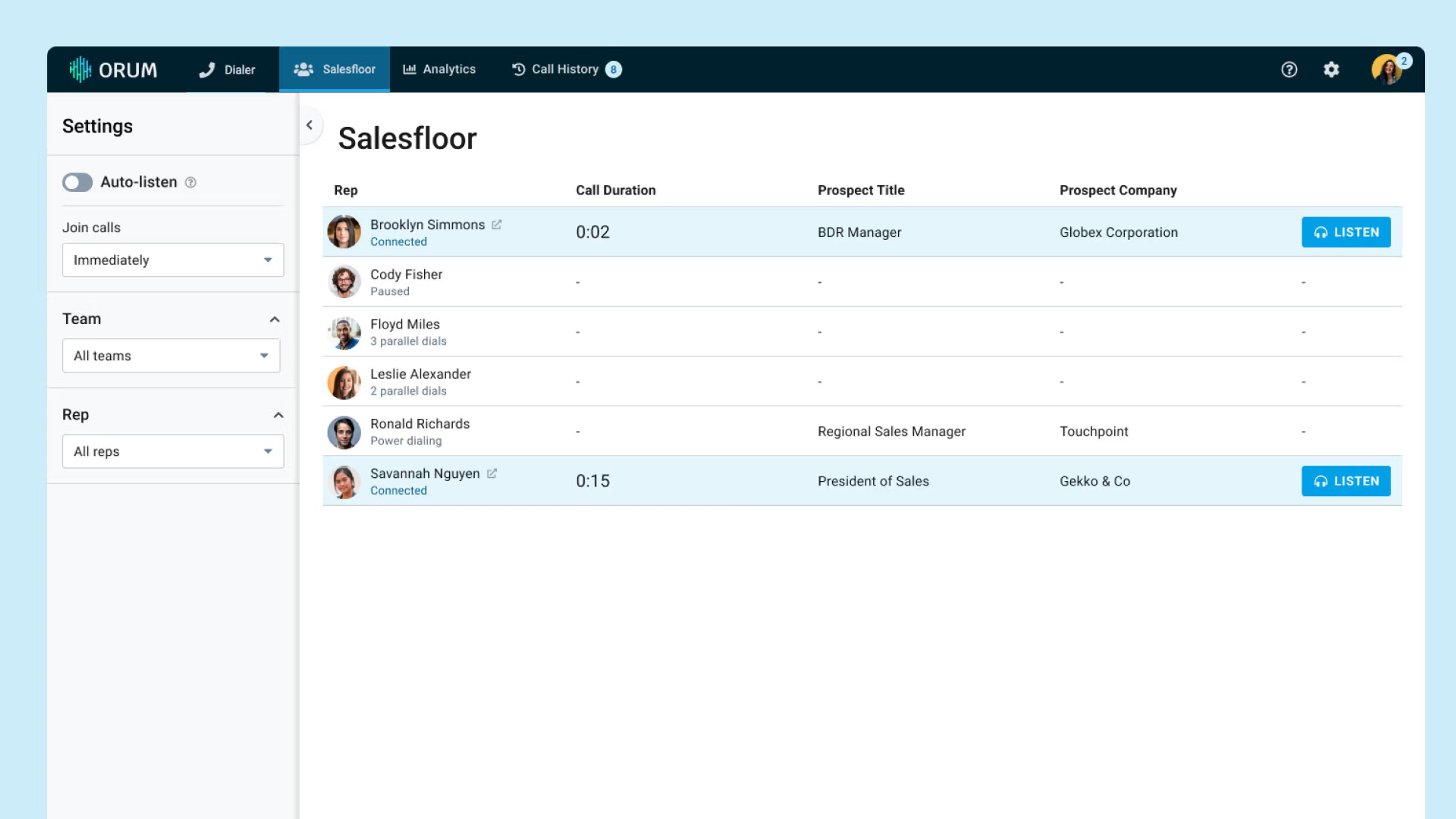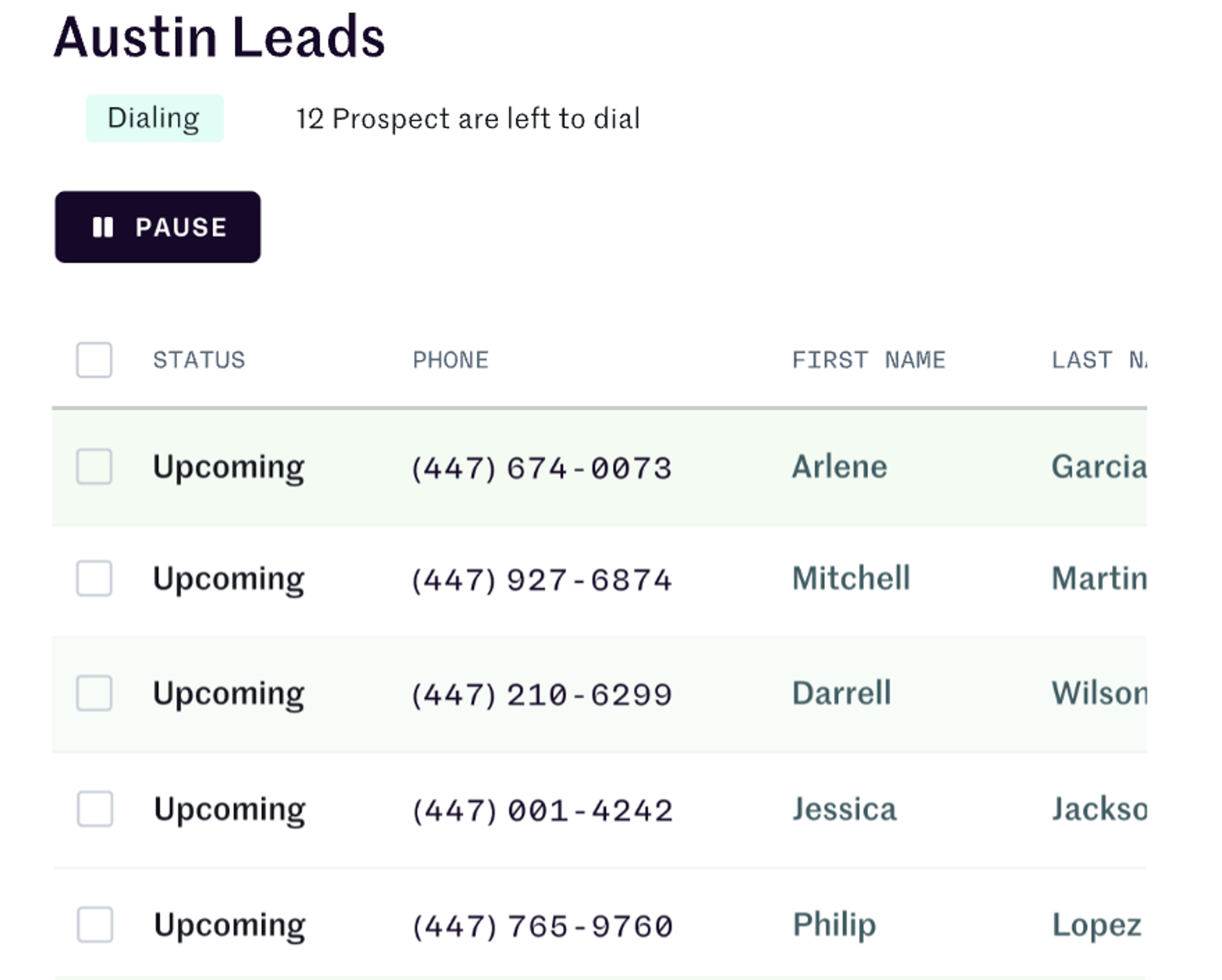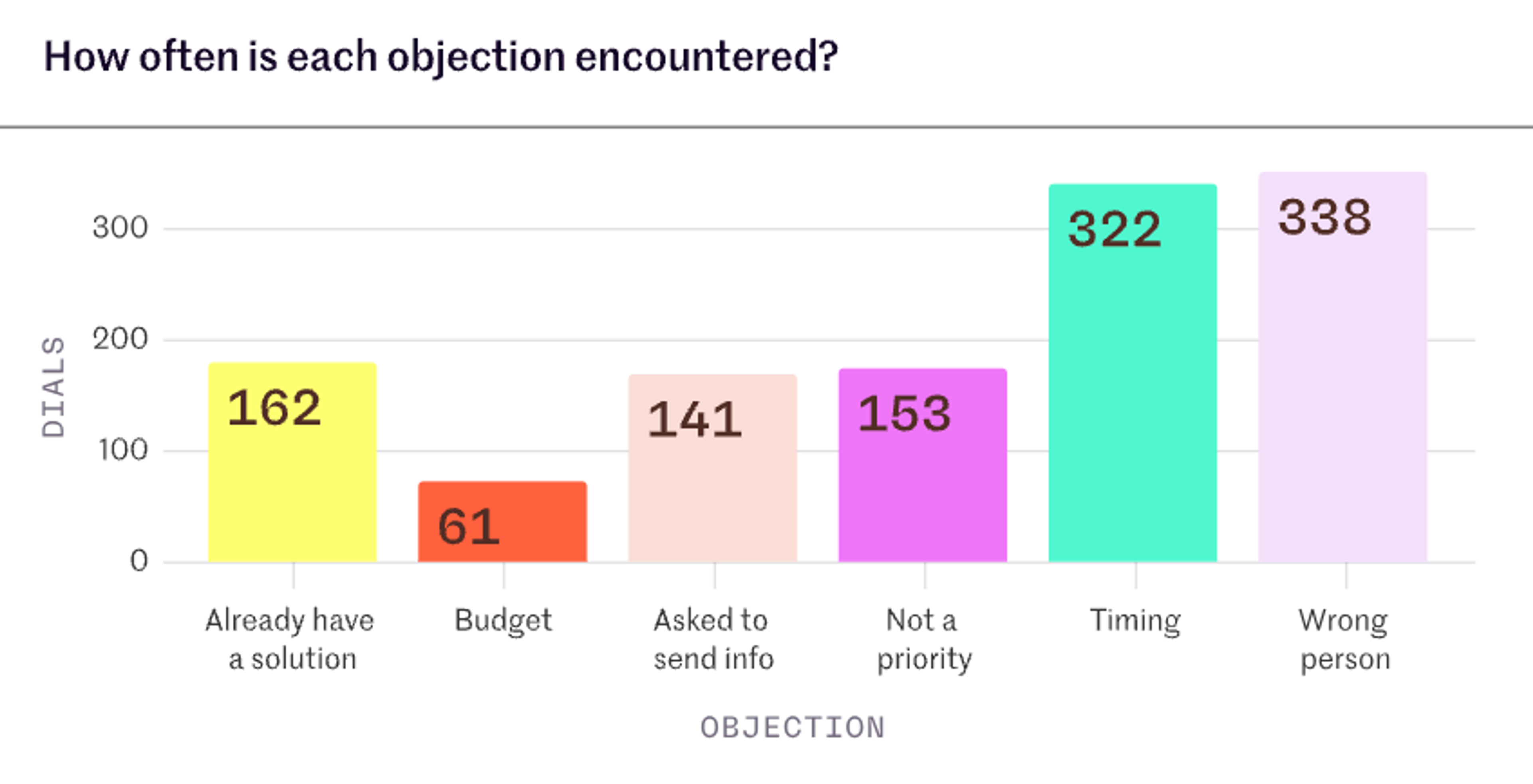SDR Performance: Spotting & Preventing Early Issues


According to our 2024 State of Sales Report, 21% of the time, sales development representatives leave an organization for performance or voluntary reasons.
This stems from issues like a lack of market knowledge and unstructured processes. However, these early struggles affect more than just the SDRs themselves; they can also delay pipeline growth and impact morale across the wider team.
To help spot these issues before they start impacting your bottom line, we sat down with SDR Leader, Jonathan Vaudreuil and Emad Al Marzoog, Founder of SDR Foundry to discuss the early warning signs of SDR performance. We’ll also look at the practical methods and tools you can use to overcome these challenges and empower new SDRs to perform at their best.
Promote learning, enhance performance
With Orum, you can reduce ramp-up time with real-time sales coaching
Request a demo
Why new SDRs can struggle to ramp up
It’s natural for SDRs to face challenges early on and with the right support, most issues can be overcome. Vaudreuil points to three main reasons behind ramp-up issues: development, process, and wrong fit — two of which are generally fixable.
“With development issues, the SDR needs to learn more through training, coaching, practicing,” he describes. Meanwhile, if your SDRs don’t have clear processes, it can be difficult for them to be successful. To identify prospects, qualify leads, and lay the groundwork for your account executives to make sales, you need to focus on optimizing and communicating your processes to support your team.
In rare cases, it turns out that the job just isn’t for everyone. Some people are rejection-averse and find making calls stressful. As Vaudreuil states: “People do best when they're working towards something as opposed to trying to avoid something. Someone who isn’t a fit wants to avoid doing the job.”
SDR warning signs and effective strategies to overcome them
Let’s look at the practical steps to identify, understand, and solve common performance issues with new SDRs.
1. Lack of enthusiasm and motivation
SDRs are often the first point of contact for new prospects. Their performance and success will suffer without a high-energy approach and persistent attitude.
What to look for:
SDRs lacking in this area might display minimal participation in sales team meetings, struggle to take the initiative and show disconnection from their work. This can manifest in a reluctance to ask questions or low-energy communication in prospecting calls.
Over time, this can spread to their immediate colleagues and bring the atmosphere down across the whole team.
Why it happens:
This stems from numerous factors, including feeling overwhelmed, difficulty dealing with frequent rejection, and not properly understanding the reason behind Key Performance Indicators (KPIs).
As Vaudreuil explains, “Clear KPIs, goals, and expectations are crucial. If you want an SDR to learn a system and improve, they need to understand how it’s going to be measured.”
What to do:
It’s important to re-engage your SDRs by conveying how their day-to-day activities relate to their personal goals and the wider company mission. Celebrate small wins to rebuild their confidence, even just booking a meeting or creating a strong email.
It’s also important to ensure they understand that the most successful salespeople in your organization have been through this exact same cycle of frequent rejection. This helps them detach from it and not take things personally, building perseverance and keeping momentum.
You can also support SDR team-building and camaraderie using Orum's virtual Salesfloor. This brings the buzz of an exciting sales atmosphere to remote teams, allowing team members to see where other reps succeed and strive for the same success.

2. Struggles to follow the sales process
A clearly defined sales process built on proven methods is essential for consistent results. When new SDRs deviate from this path, their efficiency and ability to hit targets will suffer.
What to look for:
Signs of process-related issues can include skipping steps in outreach workflows, sending generic emails just to hit lead generation KPIs, or failing to properly update information in your CRM system.
This can lead to missed opportunities, an unqualified number of leads, and a growing lack of accountability in sales activities.
Why it happens:
Process problems often come when SDR training doesn’t emphasize the ‘why’ behind each step of the process. This leads to SOPs and strategies not being followed.
“SDRs sometimes focus on high activity levels rather than quality, causing them to rush through essential processes,” says Vaudreuil.
Meanwhile, many SDRs don’t have a frame of reference for success. “So many SDRs are simply given a script written by AI or someone who’s never cold called or cold emailed before,” Al Marzoog explains, “Ideally, your SDRs should be coached by someone who’s done it before with tried and tested methods.”
What to do:
First, document your process in a sales playbook. This document must be accessible and clearly explain why a particular approach is important.
Then, during onboarding, make sure new SDRs understand the importance of quality in their outreach by giving examples of successful execution and the results it generates.
Live conversation platform Orum supports speedy ramp-up by allowing you to showcase the best practices of top-performing SDRs more easily. You can use automatic call transcriptions and an accessible Call Library. Meanwhile, your SDRs can learn from common situations, make playlists of great call examples, and shadow sales reps live — all from one platform.

3. Low activity levels or procrastination
While quality is key, the SDR role will always be a numbers game. Sales pipeline health inevitably suffers when output drops and tasks pile up.
What to look for:
As our recent report identifies, “busy” work is becoming a thing of the past. While 61% of respondents say daily sales KPIs have increased, the main focus of those KPIs is booking meetings (60%).
However, SDRs struggling with low activity might miss these KPIs and spend excessive time on non-essential jobs like over-researching or long-winded admin. This can lead to reps appearing busy but achieving low SDR metrics such as meetings booked.
Why it happens:
Low activity can stem from issues like fear of rejection or low self-confidence. However, poorly structured tech stacks often lead to SDRs wasting time on manual processes.
As Al Marzoog highlights: “An underdeveloped tech stack can hurt your SDRs significantly. No longer does an SDR need to spend hours adding leads to sequences or dialing a phone number manually.”
What to do:
Look for a solution, like Orum that automates manual work to decrease ramp-up time. With our dialer, your reps can easily eliminate data entry, filter out bad numbers, and build call lists.

4. Difficulty engaging with prospects
When SDRs struggle to form a rapport with prospective clients, lead quality and conversion rates quickly suffer. Prospects are less likely to trust the representative or feel confident that the solution meets their needs.
What to look for:
SDRs struggling to engage with prospects might report high rejection rates, have a high frequency of short or dismissive calls, and fail to secure meaningful results like booking meetings from their outreach.
Why it happens:
Engagement issues are often rooted in inadequate research on the prospect or insufficient training on what the SDR/Client relationship should look like. As Al Marzoog explains: “SDRs who rely on generic scripts without understanding their audience’s needs will always struggle to connect.”
This lack of training can also lead to new SDRs being afraid to improvise during calls. This stops them from tailoring their approach to different prospects and adapting strategies on the fly to build relationships like experienced reps.
What to do:
Make sure your training comprehensively covers research techniques, focusing on identifying and addressing the common pain points of your target demographic. This will allow your SDRs to craft personalized outreach messaging and adjust their approach dynamically properly.
Al Marzoog explains how this should look: “Empower your SDRs to lead the relationship between themselves and the sellers they support… All my SDRs create the agendas for their meetings with their sellers to ensure they get what they need from them.”
You should also use a tool like Orum, which automatically detects common objections. This regular feedback loop will help new SDRs and the wider team continuously refine their engagement strategies.

Pro tip: Check out our videos on objection handling to help your reps improve regardless of sticky situations or tough customers.
5. Lack of product or market knowledge
Product and market knowledge gaps can lead to awkward moments, poor-quality conversations, and missed opportunities.
What to look for:
SDRs without adequate product knowledge can struggle to articulate value propositions efficiently, fumble questions about features, or fail to align the product as a solution to the buyer's problems.
Why it happens:
This issue usually stems from not having the product explained properly during onboarding. When onboarding is rushed SDRs often aren’t given the time or resources to develop a deep enough understanding of the product and market.
An overemphasis on early-stage activity metrics can also cause new SDRs to prioritize outreach volume over learning. If you ask them to hit several calls per week before they’ve fully ramped up, this could be an issue.
What to do:
Make sure your onboarding programs are structured and paced to focus on product knowledge alongside core outreach techniques. To promote knowledge retention, you can use a combination of interaction workshops, mock calls, and knowledge tests like quizzes.
You can also give new SDRs the opportunity to talk to product experts during their first few weeks to properly understand how solutions align with customer pain points.
This can be further reinforced with team huddles and feedback sessions where SDRs can share their knowledge gaps and ask questions in an open forum. “Repeat and reinforce everything until it’s second nature,” Vaudreuil advises.
6. Resistance to feedback or coaching
Effective sales coaching is vital for improvement because it provides real-life examples of a successful approach.
What to look for:
SDRs developing resistance to coaching can show defensiveness when given feedback, unwillingness to act on coaching suggestions, or an inability to ask for help. These behaviors lead to repeated mistakes and stagnant performance.
Why it happens:
This resistance often comes from new SDRs fearing judgment. It can also arise from a lack of trust in their coach or manager's intentions. These problems are multiplied when feedback is unclear and coaching is inconsistent.
What to do:
Make sure feedback is clear and framed as an opportunity for growth instead of outright criticism.
To achieve this, highlight strengths alongside areas for improvement during coaching sessions, offering a balanced perspective that isn’t overly discouraging. Use our free sales call report template and get insights on how to review sales calls for SDR coaching.
You can also use metrics from successful reps to illustrate disconnects with new SDR performance, showing them the results in success (and commission) possible through changes to their approach.
Pro-tip: Use Orum to build a complete picture of seller performance with real-time analytics split up by rep, list, or account.
7. Inconsistent performance
Performance that fluctuates without any apparent reason can indicate ramp-up issues. It may reflect inconsistent training, unclear expectations, or a lack of confidence in applying sales strategies effectively.
What to look for:
Inconsistent performance can manifest as rapidly diverging activity levels daily or weekly. Periods of high productivity followed by sharp decline can lead to widely varying success rates. In other words, it’s a red flag if an SDR sometimes surpasses their KPIs and misses them completely at other times.
Why it happens:
This kind of inconsistency can result from poor time management, unstructured daily workflows, or, worst case, burnout.
It can also occur when new SDRs veer off the course in their original training, relying on ad-hoc workflows over established practices. As Al Marzoog explains: “You’ll be surprised to see how much they veered off from their original training when they start to screen share how they start their day. You’ll likely catch significant areas of improvement that can help them efficiently speed up.”
What to do:
Help SDRs build consistent habits early with effective time management training and regular process reviews. Their workflows should also be closely monitored during the ramp-up process to allow for corrective guidance when necessary.
Leverage Orum to spot issues and boost ramp-up time
Challenges in the ramp-up process are natural. But spotting them early and making the right adjustments can change them from roadblocks into stepping stones to success.
Orum supports these adjustments with a live conversation platform to support sales ramp-up. In addition to outbound call tracking, features like call libraries and automatic transcription bolster the training and feedback process by bringing real-world context to objection handling.
Meanwhile, advanced multi-dialler and automatic call lists through CRM integration take the busy work out of hitting targets, letting new SDRs focus on quality.
This quality is also measurable, with advanced analytics on performance like calls converted to meetings, allowing reps to understand where they’re at on the ramp-up journey vs where they need to be.
Promote learning, enhance performance
With Orum, you can reduce ramp-up time with real-time sales coaching
Request a demo
Frequently asked questions about SDR performance
What's an example of high SDR performance?
A high-performing sales development team should exceed minimum quotas, build a strong pipeline, and consistently maintain the quality of their outreach.
What are some SDR performance metrics?
Some key metrics to gauge SDR performance include call-to-meeting conversion rates, lead qualifications rates, and number of meaningful conversations per week.
What are SDR performance reviews?
Performance reviews for SDRs should evaluate quantitative metrics/KPIs, open feedback on how SDRs feel about their progress, and skill development to optimize their performance and support growth.





